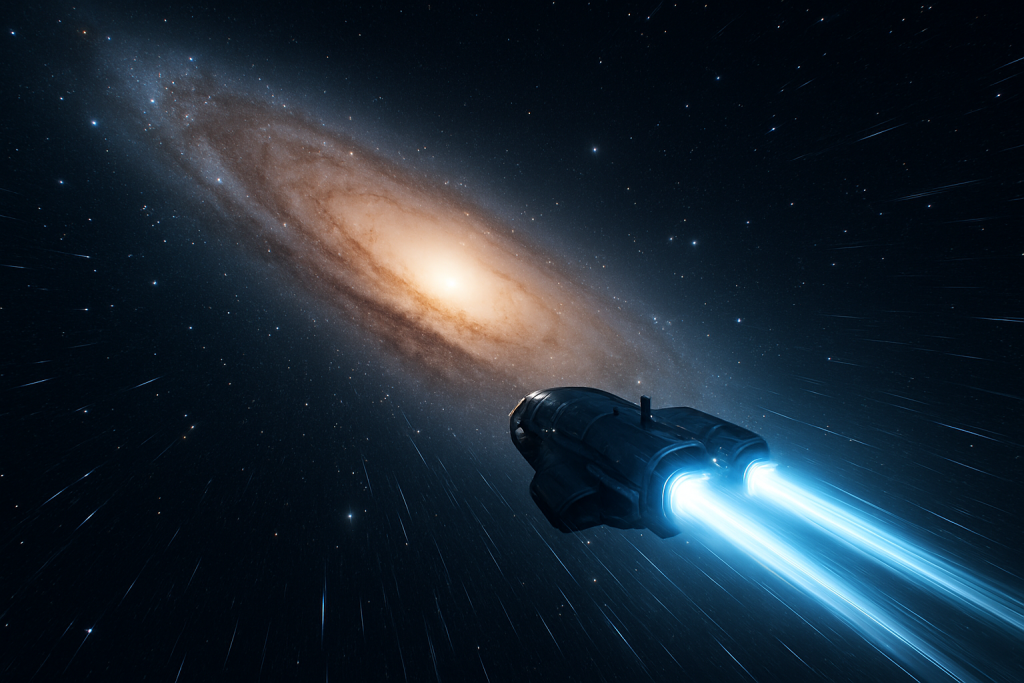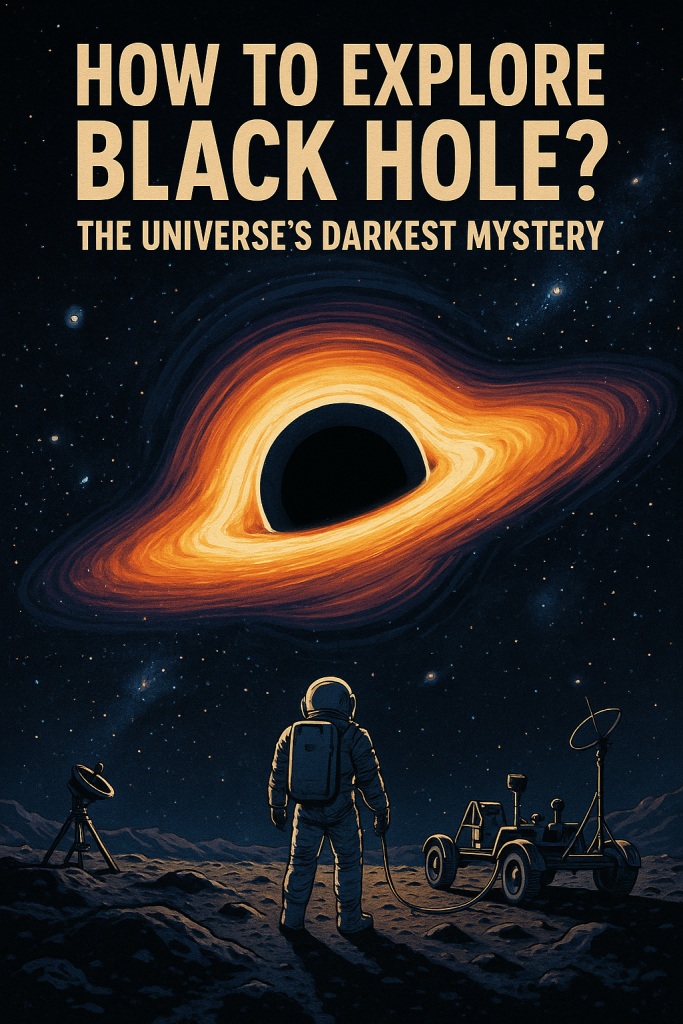⏲️ Estimated reading time: 7 min
Black holes are the most mind-bending phenomena in the cosmos. What lies beyond their event horizons? Is there a center or something beyond comprehension? Let’s journey through the science, theories, and mysteries inside a black hole.
What Is Inside a Black Hole? | Facts HelpZone
Black holes have captivated scientists, astronomers, and science-fiction fans for decades. They are not just incredibly dense regions of space they are zones where our current understanding of physics is tested to its limits. Inside a black hole lies the possibility of unimaginable density, warped time, and possibly the key to unifying the most fundamental laws of nature.
But what is really inside a black hole?
Let’s dive into this cosmic mystery and uncover the layers of theoretical and scientific understanding that try to answer this very question.

🌌 What Exactly Is a Black Hole?
At its core, a black hole is a gravitational singularity a region in space where gravity is so intense that not even light can escape. According to Albert Einstein’s General Theory of Relativity, when a massive star collapses at the end of its life cycle, it can compress its mass into an incredibly small volume. This forms a black hole.
The most defining characteristic of a black hole is its event horizon. This is the point of no return. Once anything a planet, star, or photon crosses this boundary, it can no longer escape.
But inside the event horizon is where the real mystery begins.
🔍 Layers of a Black Hole
To understand what might be inside a black hole, we need to break down its structure:
- Event Horizon – The invisible boundary beyond which nothing escapes.
- Photon Sphere – A zone where gravity is strong enough to make light orbit the black hole.
- Ergosphere – Found around rotating black holes, where spacetime is dragged.
- Singularity – Theoretical core of infinite density and zero volume.

🧠 What Is a Singularity?
The singularity lies at the heart of every classical black hole a point where matter is crushed into infinite density. Here, the curvature of spacetime becomes infinite, and gravity is infinitely strong.
This is where Einstein’s relativity breaks down. Current physics cannot describe what happens under these extreme conditions. It’s the ultimate “edge of reality” as we know it.
Physicists propose multiple interpretations, including:
- True singularity: Infinite density.
- Quantum gravity core: Where gravity is quantized and singularity is avoided.
- Holographic horizon: Where information isn’t lost but encoded on the event horizon itself.
🔬 Quantum Mechanics vs General Relativity
Einstein’s theory of general relativity explains gravity and the structure of spacetime. Quantum mechanics explains how subatomic particles behave. Both are extremely successful in their own realms.
But when we try to combine them like inside a black hole contradictions arise.
For instance, general relativity predicts a singularity, but quantum theory does not allow infinite density or zero volume. The quest to unify these theories is called quantum gravity, and black holes are prime testing grounds.
⌛ Time Inside a Black Hole
Time behaves differently near and inside a black hole. Due to gravitational time dilation:
- An observer far from a black hole sees time for someone falling in slow down.
- The person falling in would experience time normally, but they could never send a signal back.
From an outside perspective, the falling object appears to freeze at the event horizon. But from its own perspective, it continues to fall potentially to the singularity.
🧬 What Happens to Matter Inside?
Anything falling into a black hole is stretched and compressed in a process called spaghettification. Tidal gravitational forces stretch objects lengthwise and compress them sideways.
At some point, all matter loses its structure atoms, subatomic particles, and everything else. It may collapse into a unified state of energy or merge with the black hole’s mass.
But this leads us to a paradox…
🧾 The Information Paradox
Physicist Stephen Hawking posed a problem in the 1970s: If black holes destroy all information about what falls into them, this violates the laws of quantum mechanics.
Quantum theory says that information cannot be destroyed. But black holes seem to erase it.
To solve this black hole information paradox, several ideas have been proposed:
- Holographic Principle: All the information is stored on the event horizon.
- Firewall Hypothesis: A wall of high-energy particles burns up information before it reaches the singularity.
- Remnants: After black holes evaporate via Hawking radiation, tiny remnants may store the information.
🛸 Are There Gateways Inside?
Several speculative ideas attempt to explain what might lie beyond:
1. Wormholes
Black holes might be entrances to wormholes tunnels through spacetime that connect distant parts of the universe or even other universes. However, stable wormholes would require fascinating matter and are purely theoretical.
2. White Holes
A white hole is the theoretical opposite of a black hole. While a black hole pulls everything in, a white hole would eject matter and not allow anything in. No white hole has ever been observed.
3. Alternate Universes
Some theories suggest that matter entering a black hole could spawn a new universe the core of a black hole might be the Big Bang of a new cosmos.
🌠 Types of Black Holes
There are different categories based on mass and formation:
⭐ Stellar-Mass Black Holes
- Mass: 3–10 times the Sun
- Formed when massive stars collapse.
💠 Intermediate Black Holes
- Mass: 100–100,000 times the Sun
- Rare and hard to detect.
🌌 Supermassive Black Holes
- Mass: Millions to billions of solar masses
- Located at the centers of galaxies (e.g., Sagittarius A* in the Milky Way).
🕳️ Primordial Black Holes
- Hypothetical mini black holes from the early universe.
- Could be as small as an atom but with immense mass.
🌡️ Can a Black Hole Die?
Yes through Hawking radiation. Black holes emit tiny amounts of thermal radiation over time. This causes them to lose mass and eventually evaporate, though for stellar or supermassive black holes, this takes longer than the current age of the universe.
🛰️ How Do We Study Black Holes?
Although we can’t see inside black holes, we observe their effects on surrounding matter:
- Stars orbiting invisible objects (suggesting immense mass).
- X-ray emissions from matter heating up as it falls in.
- Gravitational waves from black hole mergers.
- Direct image of a black hole’s shadow (e.g., M87* in 2019).
The Event Horizon Telescope (EHT) project is at the forefront of capturing real images of black holes.
🧭 Why Are Black Holes So Important?
Studying black holes gives us clues about:
- The limits of space and time
- The origin of the universe
- The behavior of fundamental particles
- Galaxy formation and cosmic evolution
They might even hold the key to the Theory of Everything a unified theory of all forces in nature.
🛑 Misconceptions About Black Holes
Let’s clear up some popular myths:
- They’re cosmic vacuum cleaners – False. They don’t suck everything up. You can orbit a black hole safely, just like any massive object.
- Black holes are holes – No, they are extremely dense spheres with mass.
- The Sun can become a black hole – False. It doesn’t have enough mass to collapse that way.
- They teleport matter to another universe – Fun theory, but unproven.
🌌 Final Words: Into the Unknown
So, what’s inside a black hole? We don’t fully know.
It could be a singularity, an entirely new kind of physics, or a hidden reality beyond what we can observe. Black holes force us to confront the limits of human knowledge and the frontier of cosmic exploration.
They are not just astronomical phenomena they are philosophical puzzles, forcing us to rethink existence, reality, and the ultimate fate of the universe.
Until we develop a unified theory of quantum gravity, or find ways to extract more data from black holes, their interiors will remain one of the greatest unsolved mysteries of the cosmos.
📩 Do you have questions or suggestions? Leave a comment or contact us!
🏷️ Tags: black hole facts, what is inside a black hole, event horizon, singularity, quantum gravity, wormholes, hawking radiation, space mysteries, time dilation, astrophysics
📢 Hashtags: #space, #blackhole, #spacefacts, #astrophysics, #wormhole, #eventhorizon, #spaghettification, #singularity, #hubble, #cosmos
Only logged-in users can submit reports.
Discover more from HelpZone
Subscribe to get the latest posts sent to your email.

